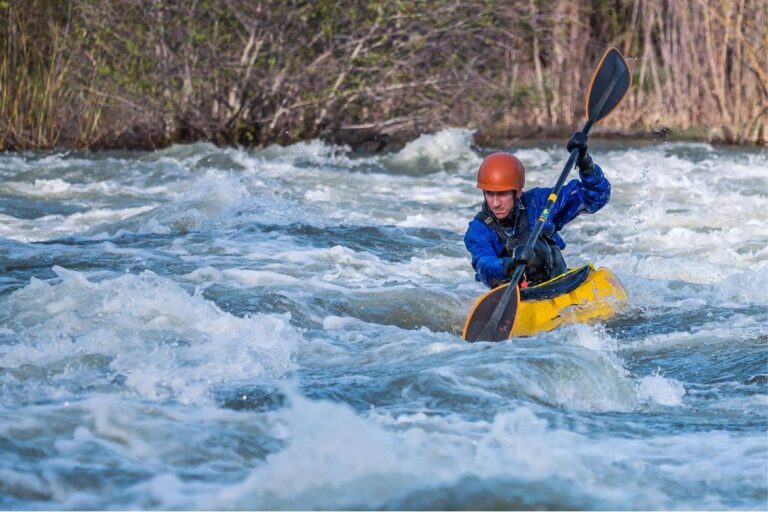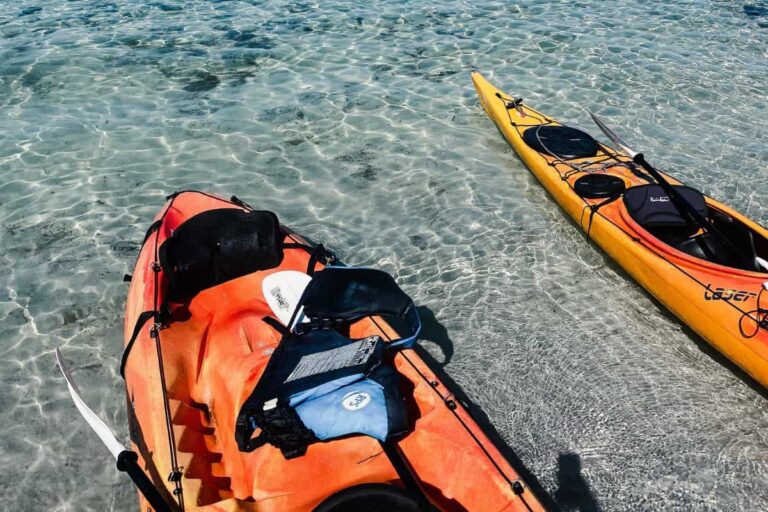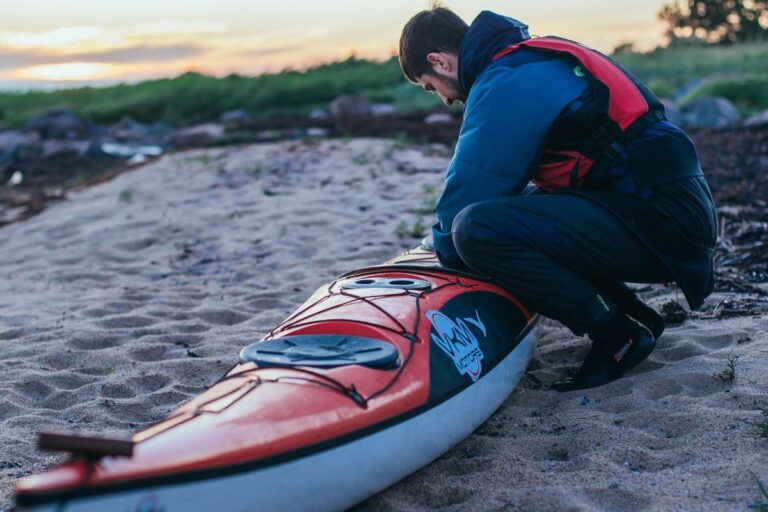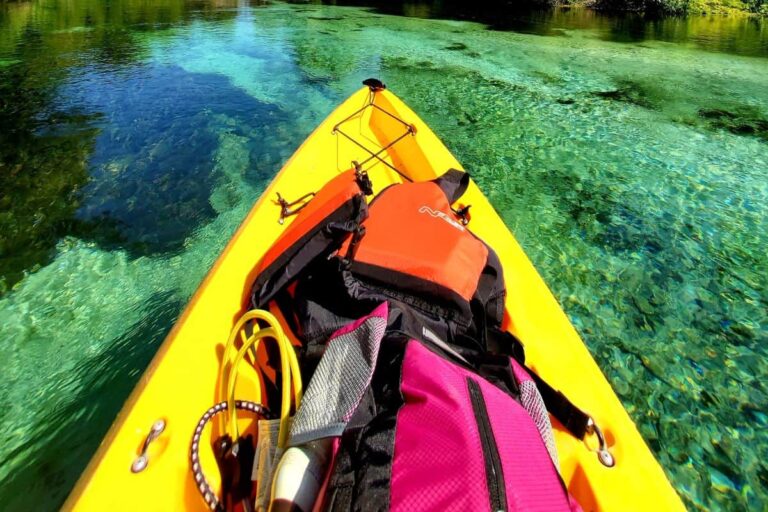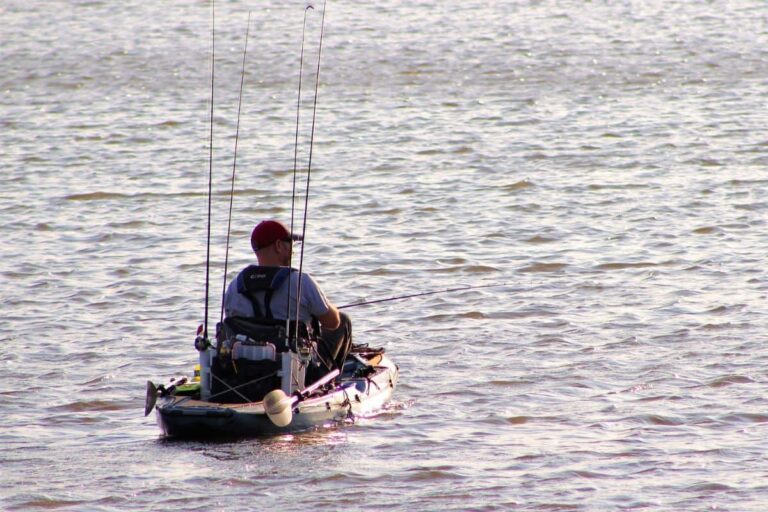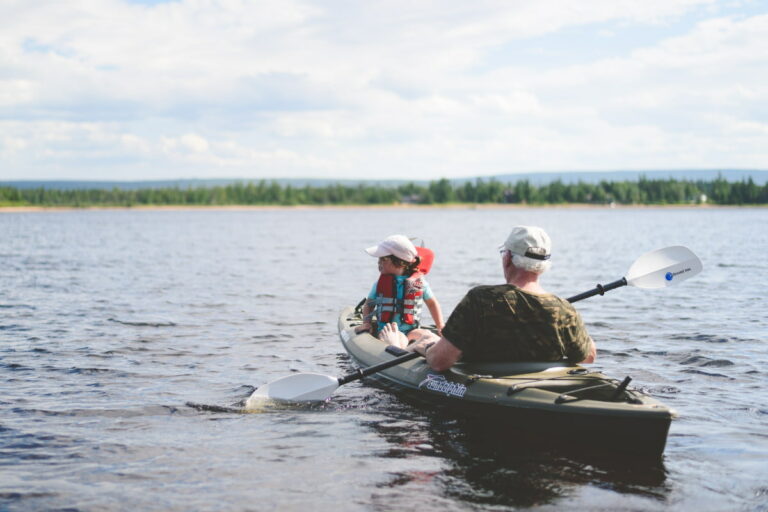Can You Kayak On The Ocean?
Kayaking out on the ocean can be fun!
But there are also a few important things you need to pay attention to when sea kayaking, like weather conditions and rough waters.
Sea kayaking can be a fun way to enjoy your vacation, but you should take the sea seriously.
Is It Safe To Kayak On The Ocean?
Yes and no. Going kayaking is never 100% safe, because there’s always the risk of drowning.
You can kayak on the ocean safely as long as you follow essential safety protocols. When sea kayaking, it’s crucial to be aware of your own skill level and physical fitness, and factor in weather and water conditions. Also be sure to have proper equipment, supplies, food, and water on board.
Preparing for Sea Kayaking
Sea kayakers need to be mindful of several factors before heading out on the water.
Careful planning and understanding the unique dangers of sea kayaking will significantly decrease your chance of an emergency.
Check The Weather Forecast And Wave Conditions
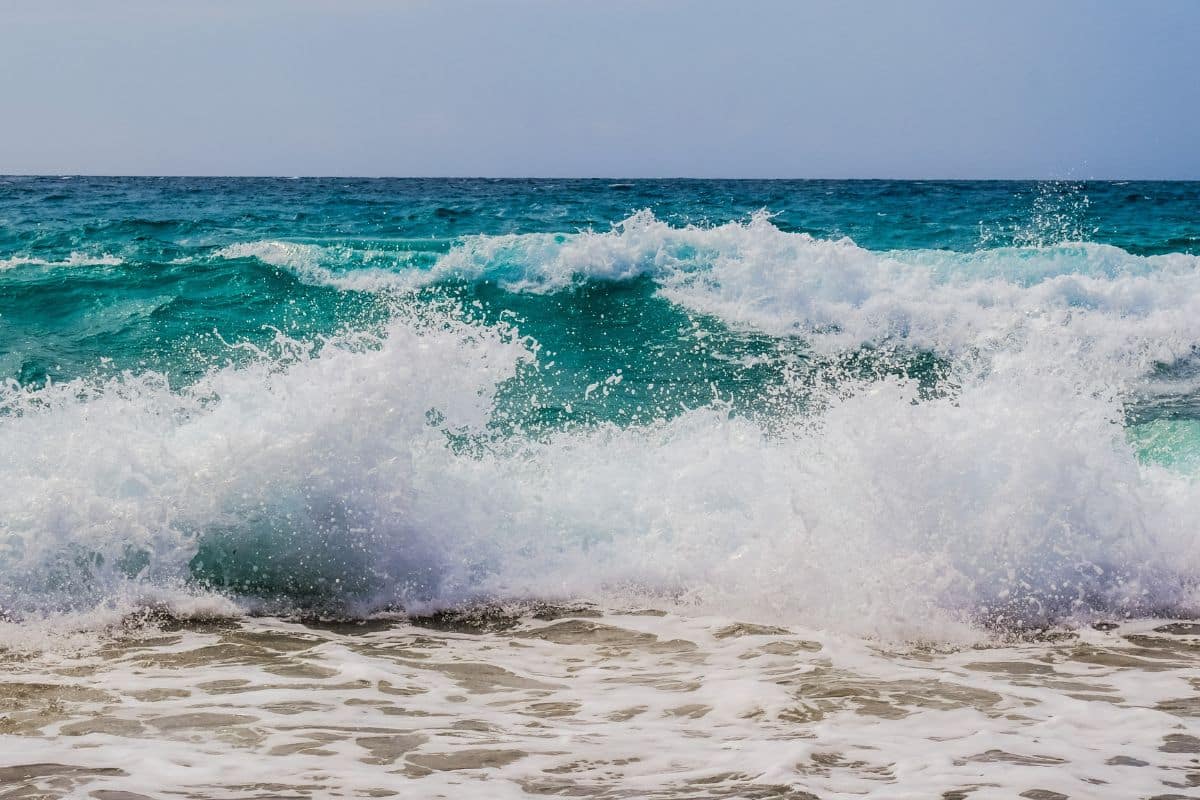
On the ocean, the weather can be unpredictable.
As opposed to river kayaking, you’re going to be farther from land.
Always check the weather forecast and patterns before going kayaking.
Kayaking in a storm is never a good idea, but additional factors can also make ocean kayaking dangerous.
For example, cold weather can cause hypothermia if you can’t make it to land quickly.
Wear a wetsuit so that if you capsize, you can retain your body heat.
Wetsuits use body heat to warm the water closest to you in order to prevent your body temperature from dropping to dangerously low levels.
Rough winds and wind direction can also pose challenges for paddlers.
Strong offshore winds will make it difficult to return to land and make the waves higher.
If the waves are more than two to three feet, then it’s best not to go out on the water.
Even if you’re paddling near the shore, a breaking wave can lead to severe injuries.
Skill Level and Physical Fitness
Ocean kayaking is not the same as river kayaking.
Out on the ocean, you’re farther from shore and are therefore in more danger if something goes wrong.
Beginners should stick with kayaking in calm waters such as rivers, large lakes, and coastal bays as they get the hang of paddling.
It takes time and practice to get used to kayaking, so be sure to learn the basic stroke techniques before attempting ocean paddling.
Once you feel ready to try the ocean, remain within a swimmable distance of the shore.
Physical fitness is also essential when it comes to sea kayaking.
On a river, especially with whitewater kayaking, the water propels river kayaks forward, so there’s more focus on steering than power.
The sea, conversely, is mainly stationary, and you may even have to fight against currents.
That’s why ocean kayakers require more strength and stamina to navigate the open waters.
Supplies
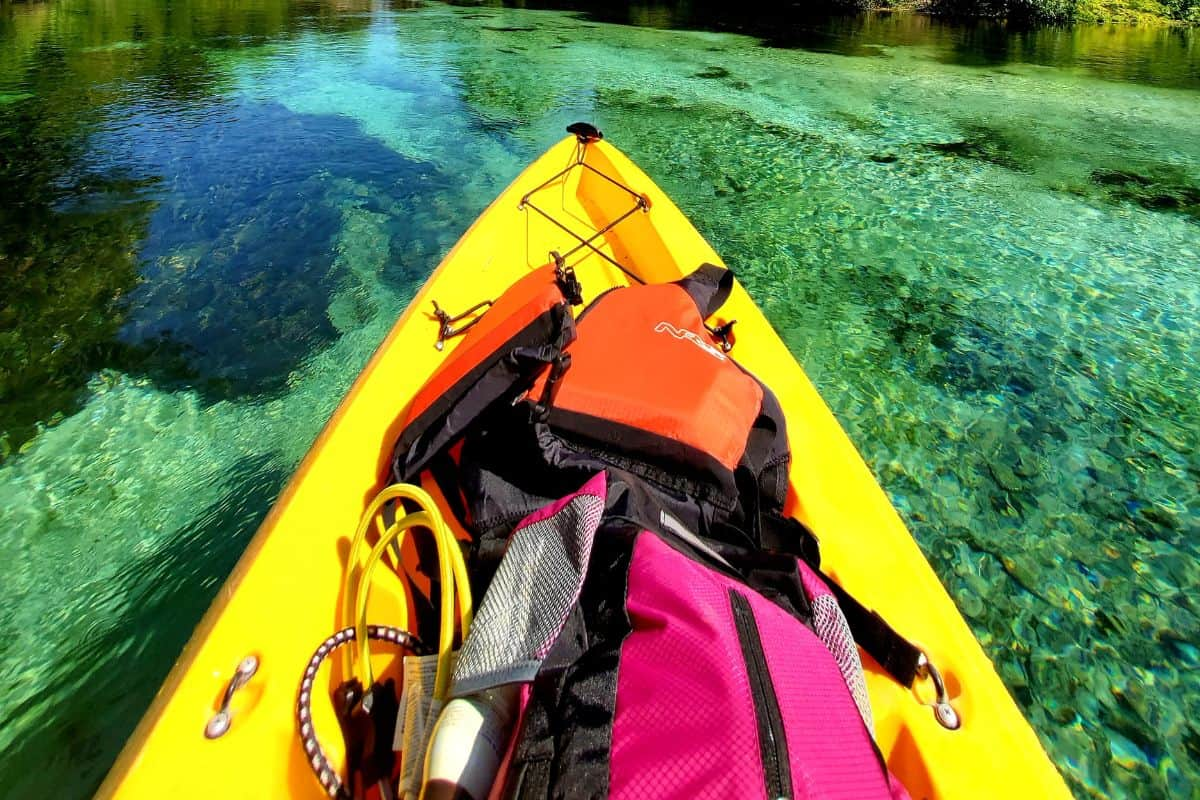
When you’re sea kayaking, it’s important to wear a life jacket.
The coast guard requires that you have a personal flotation device with you at all times in your sea vessel, and keeping it will ensure you stay safe in any large waves.
When renting a touring kayak, the rental should have a life jacket available – if not, ask for one before you go out on the water.
You should also bring a waterproof bag for your supplies to ensure they don’t get wet, especially if the kayak flips – just check the bag for holes before you head out.
It’s also wise to bring a radio to signal for help if needed, and food if you need to wait for help or feel weak.
Make sure you have a good paddle, and a spare if something happens to your first, one so you can return to shore safely.
Stay hydrated
Drinking water is also essential.
It’s easy to underestimate the power of the ocean, and staying hydrated is an important component when it comes to being at your peak ability.
Remember that moderate dehydration can cause lethargy, muscle weakness, headaches, and dizziness.
Severe dehydration can lead to delirium and even unconsciousness, so ensure that you have plenty of water for your trip, and some extra in case you need to wait until help arrives if something happens.
You can use a hydration pack to easily carry water when kayaking.
Safety Gear
It’s also important to bringing various pieces of safety gear out on the ocean, including:
- First Aid kit in case of emergency
- Whistle to signal for help or alert others of your presence
- Map and compass so you don’t get lost
- Hat and sunscreen to protect your skin from the sun
- Helmet in case you capsize, to protect your head from hitting anything
- Paddle leash to keep the paddle attached to the kayak so you don’t lose it
Type of Kayak
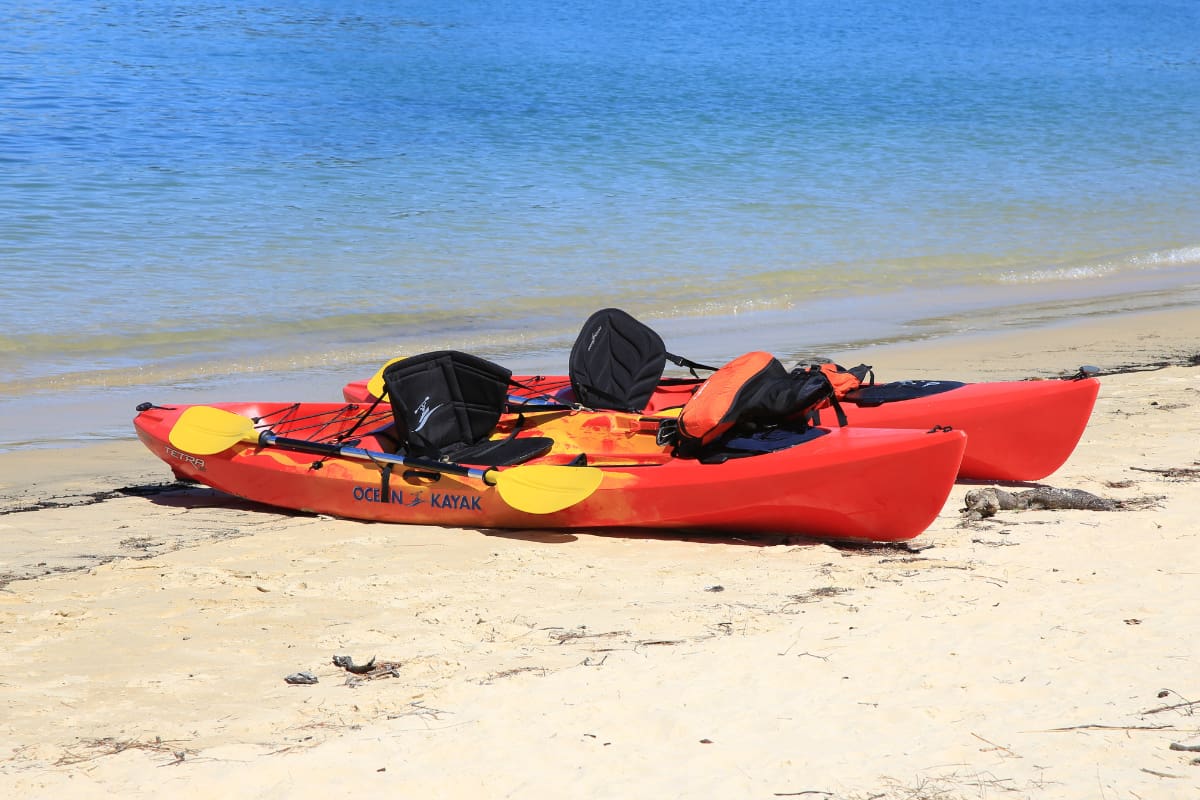
The proper type of kayak for the ocean is a sea kayak, which has two airtight hatches to keep it afloat if it capsizes, and is at least 14-feet long.
You can use river kayaks on the ocean, but experts don’t recommend it.
If you do decide to take a river kayak out on the ocean, pack the stern with extra flotation for buoyancy.
Also, remember that river kayaks will be harder to steer out on the ocean.
If you go ocean kayaking in a river kayak, stay close to shore and be extra vigilant of the weather conditions.
If you’re looking for a kayak that can also act as a touring or river kayak, try a hybrid kayak.
Other Factors To Consider Before Heading Out On The Ocean
- Currents – Understand current and shoreline conditions, do some research online about the area where you’re going, and talk to locals.
- Type of kayak – Sit-in sea kayaks won’t leave you exposed to the elements, but they’re also best for more experienced paddlers, while sit-on-tops won’t fill with water when they flip, so they’re easier to turn back over.
- Weight capacity – Check the weight capacity of your river or ocean kayak before heading out.
- Monitor sharks – Check to see if there are sharks in the area – bull sharks are an especially big problem for paddlers, since they stay close to land.
It’s also important to let someone on land know where you’re going and when you expect to be back.
Keeping Yourself Safe On A Sea Kayak
Kayaking safety doesn’t end after the planning stage – you also need to exercise safety precautions when paddling.
Setting Off
When you launch your kayak from the beach, it’s best to get on the kayak in waist-deep water.
Breaking ocean waves closer to the shore will make it more challenging to get on.
Wait for the incoming waves to cede, and then quickly get on your kayak.
In order to paddler effectively out of the surf zone, you’ll need to paddle hard towards the ocean.
It’s also best not to set off from a crowded area of the beach, as the vast majority of sea kayaking injuries occur from a swimmer getting hit by a kayak.
Before setting off from the land, ensure that you’ve shut your hatches tightly, and that your drain plug is screwed in securely.
Dangers Of Drinking Alcohol
It may seem like a fun idea to drink alcohol while you’re out on the water, but a kayak isn’t the place to do it.
Drowning is a serious concern when paddling, especially on the ocean where the water is deep.
Alcohol also makes you more susceptible to hypothermia, and also hinders your paddling skills.
Dangers In The Ocean
If you get caught in a rip current, be sure to paddle parallel to the shore instead of against the current.
Paddling against a rip current will tire you out and make it harder to return to land.
Sea kayaking is an endurance sport in itself, so don’t make it harder on yourself.
Other boats or strong currents can be dangerous to paddlers, whether you’re out for a short or long journey.
Pay special attention to big ships, because they can cause larger breaking waves, and they may not see you.
Shore break is another danger that occurs when waves break directly on land – these breaks are powerful and can cause injury.
Rescuing Yourself
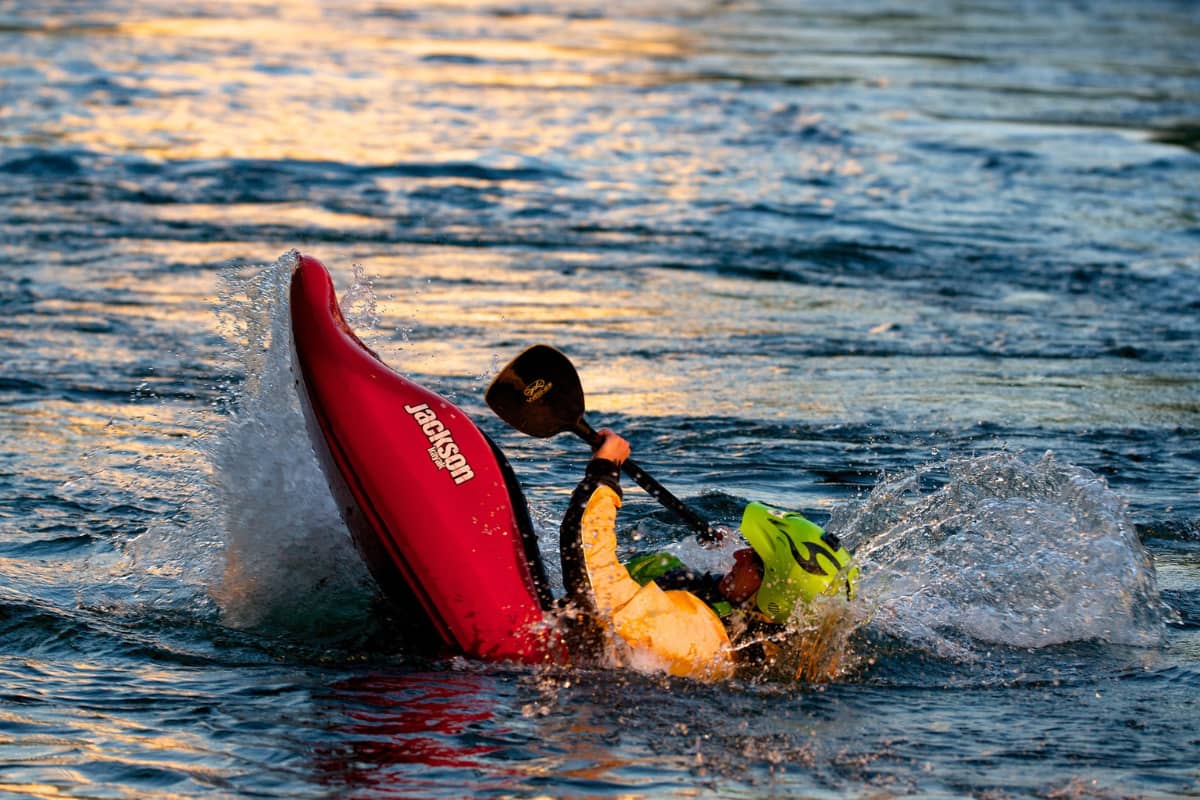
Various things can go wrong when you’re kayaking out at sea, but knowing how to perform a self-rescue can save your life.
Even recreational kayaking, when you’re staying in the surf zone, can result in injury, so always remain cautious.
The most likely problem you’ll run into is capsizing.
Before going out on the ocean, be sure to practice getting back into your boat before facing rougher waters.
For sit-on-top kayaks, position yourself on the ocean side of your kayak so that the incoming waves don’t knock you over.
Stay in the middle of your kayak and pull yourself up until you’re lying across the seat.
Then twist your body until you’re in the seated position again.
For sit-inside ocean kayaks, place yourself at the rear of the kayak facing the waves and pull your body up onto the kayak by kicking your legs aggressively.
Next, move into a seated position with each of your legs hanging over the sides of the kayak.
Finally, scoot forward until you’re sitting in the correct position.
If you find yourself stuck in the ocean and you’re not capable of paddling back to shore, you need to radio for help.
Dial into channel 16 and send a distress call to the Coast Guard, giving them the best estimate of where you’re at and what your situation is.
Stay in place and wait for the rescue boat to arrive.
Conclusion
The open sea is a fantastic place to experience nature, but you need to be mindful of safety precautions in order to have an enjoyable and safe kayaking experience.
Anyone who goes kayaking on the ocean needs to use the right equipment, and avoid going out in bad weather.
Even experienced kayakers need to be aware of potentially challenging conditions, like strong winds and rip currents, in order to prevent injury.
Table of Contents

